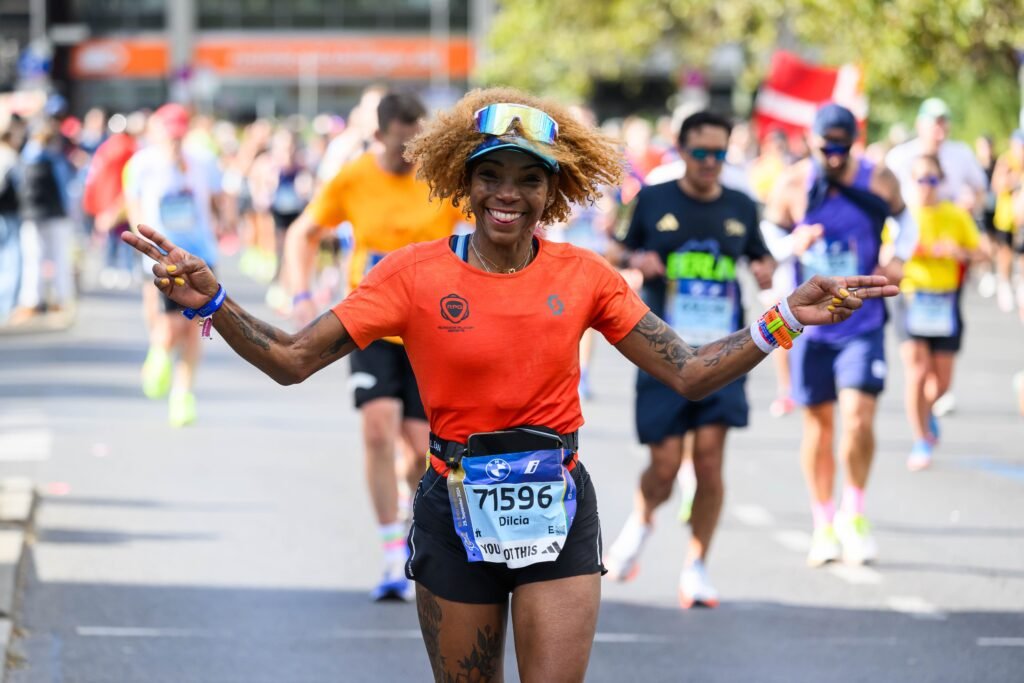The Abbott World Marathon Majors are a series of seven races, including the Tokyo, Boston, London, Berlin, Chicago, New York City Marathon and – as of 2025 – Sydney Marathons. The Six Star Finishers are people who have finished the original six races (not including Sydney). The host, Abbott, maintains a Hall of Fame with data about these Six Star Finishers.
The dashboard below enriches that dataset with some other information from publicly available race results. You can use the dashboard to explore the number, gender, and age of these finishers around the world. The table summarizes the fastest runners according to a metric of your choosing – their fastest time, their median time, or their mean time.
For more details about the data and methodology, scroll down below the dashboard.

Data and Methodology
The core dataset comes from the Abbott Six Star Finishers Hall of Fame. This includes a runner’s name, gender, country of citizenship, their fastest time at each of the six races, and the year they completed each of those six races.
I combined that dataset with the actual race results to determine a runner’s age on race day and estimate their birth year. Where available, I also identified the state a runner is from. The first round of matching relied on an exact match of a runner’s name, gender, and finish time. The next round used a fuzzy match on a runner’s name and an exact match of their gender and finish time. The final attempt looked for the presence of the first or the last name in the runner’s full name from the Tokyo Marathon, because the names were transposed in some cases.
I did not utilize the results from either Chicago or London for this matching, because those races only report ages in age groups – not discrete ages.
In some cases, there are minor discrepancies in spellings or official times between the Abbott Hall of Fame and the published race results. And in some cases, results did not include a state for an American runner.
Approximately 99% of runners were matched to a record with an age. Based on that, their age was subtracted from the year of the race to approximate their birth year (+/- one year).
A small group of runners remain unmatched. For the most part, these are wheelchair athletes who do not appear in the main race results. At a future point, I plan to incorporate them into the dashboard and identify them as wheelchair racers.
About two thirds of American runners have a state matched to their record. Another one third do not. State based rankings are, therefore, incomplete.
How Are Runners Ranked?
You can use the dropdown in the top right corner to choose one of three metrics to rank the runners: their fastest time, their median time, and their mean time.
The fastest time option identifies the fastest race time they recorded and uses that result. If you hover over the athlete’s time, it will provide you with more information about which race that was.
The median time takes the six race times and calculates the median time. This is a good method for comparing people who ran four or five races in their prime and completed the sixth race much later. There are many runners who started out young and finished Tokyo many years later – and therefore finished much more slowly.
The mean time takes the average of the six times. This method is susceptible to outliers if one race is much slower than the others.
What Else Should I Know About the Dashboard?
The bar chart in the top left breaks the runners out by their birth year and their gender. You can click on this chart to filter the rest of the dashboard. If you hold down the control button while clicking the chart, you can highlight multiple groups.
The map at the bottom of the dashboard displays the number of runners per country. You can click on a country to filter the rest of the dashboard. Again, hold the control button to choose multiple countries.
There are also filters for gender, country, and state available in the drop down menus.
Based on the filters, the top 100 athletes – according to the metric that you chose for ranking – will appear in the table. If you hover over their finish time, you’ll see other information on that runner.
Hi there! I’m a six-star finisher and for some reason, I don’t appear in your dataset. Another woman who is a six-star finisher from my state also doesn’t appear in your dataset. We are both from NM. It’s possible that it’s because we were among the early ones? I know that I got my six star before the 5000th six star finisher. At any rate – I found it curious that we both were missing. (Her name is Jamie Dawes)
Hi Charrissa. It’s fixed, and both of you are properly listed now.
Some of the race results don’t have reliable state data, so sometimes the runner matches but the state isn’t included. In your case, the state was blank. In Jaime’s case, she was marked as MA, because sometimes Boston defaults to using that as a state.
In any case, it’s fixed now – and if anyone else notices yourself or someone you know missing, please let me know!